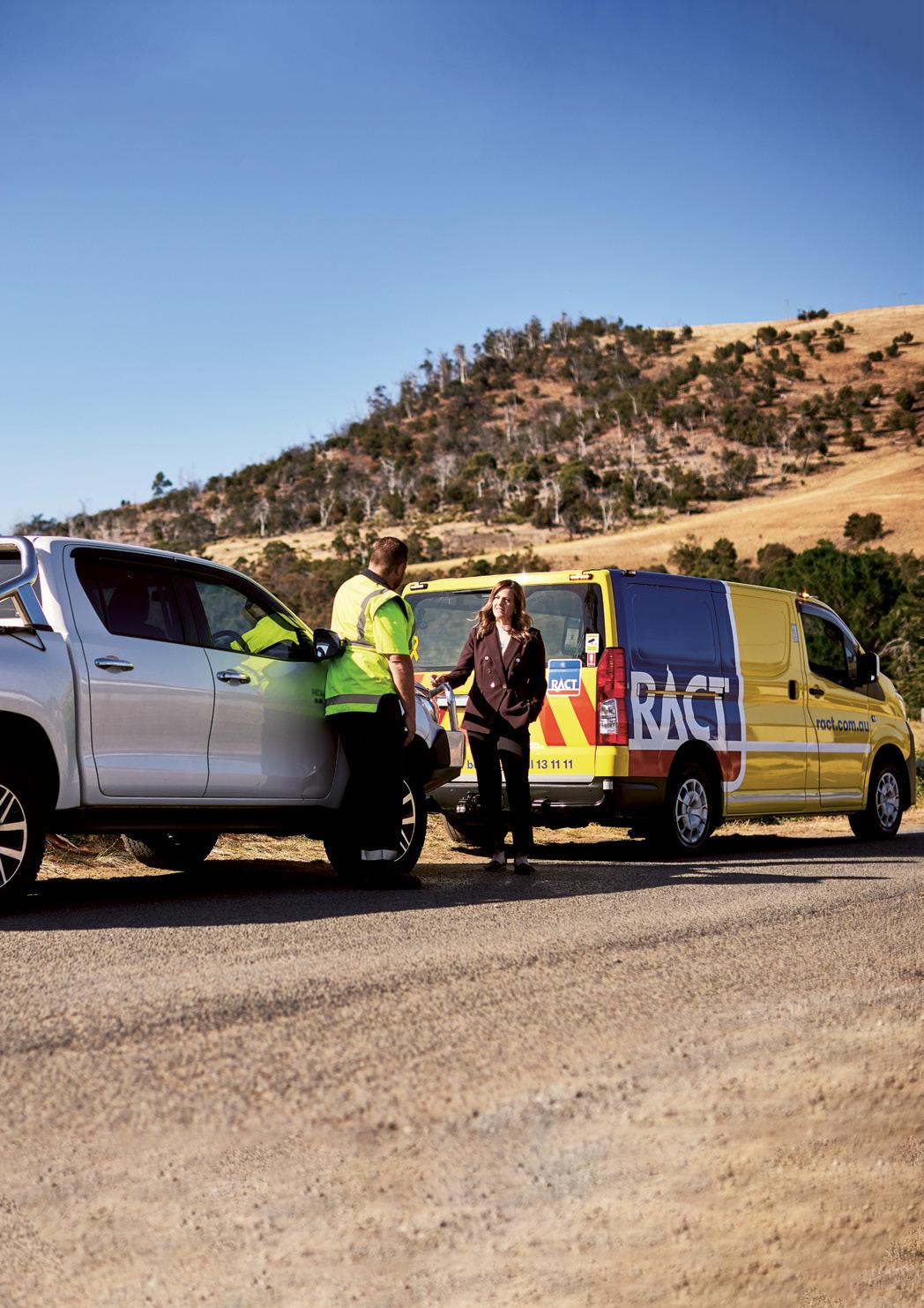
4 minute read
Combating speed
A new program of mobile automated enforcement cameras aims to deter drivers from speeding.
s the number of fatalities on Tasmanian roads tragically continues to climb, it seems as if there are no easy answers. But there is one basic factor that is common to so many fatal and serious injury crashes occurring on our roads, and that is speed.
Almost one in three fatalities and serious injuries on Tasmanian roads is linked to excessive speed. It’s simple physics: the faster you go, the harder you hit, the more damage you do.
This is why the Tasmanian Government is implementing a new program of mobile automated enforcement cameras, which will begin operating at locations across the state from September this year. You may already have seen the highly visible ‘Over is Over’ cameras being tested on the roadside to ensure that they are operating at the highest standards.
Across the world, automated enforcement cameras have been proven to be one of the most effective tools for ensuring road users drive at or below the speed limit, keeping themselves and others safe. In fact, nine out of ten surveyed Tasmanians agree that enforcement cameras discourage speeding.
For most drivers, seeing a speed camera on the side of the road provides reassurance that speed limits are there for a reason and being enforced for the good of the community. For others though, the likelihood of being caught and, the threat of a fine and demerit points is the only effective deterrent. That’s why the cameras will be deployed in a mix of highly visible trailers and more covert vehicles.
ACamera locations have been carefully chosen to maximise road safety outcomes, taking into account past crash history, current speed levels and road infrastructure. More locations will continue to be identified, with consideration given to sites suggested by the community. The cameras will be positioned randomly across hundreds of potential locations, so speeders will never know where or when they might be detected. The cameras will be located on busy urban highways, on quiet country roads, and along local shopping strips – a mobile enforcement camera could be anywhere, anytime. Utilising current technology, the new cameras employ tracking radar to monitor multiple lanes of traffic travelling in both directions. The cameras are capable of tracking up to 50 vehicles simultaneously and can capture evidence of speeding by all vehicle types, including motorcycles and speed-limited heavy vehicles. When a vehicle is detected above the speed limit, the radar triggers a highresolution camera to capture evidence of the offence. An infrared flash, which is virtually invisible to the human eye, allows for images to be captured in all weather and light conditions – day or night, rain or shine. Mobile automated enforcement cameras are here to deter those who flout the law. There’s no getting around it – those who speed will be caught. The message is clear. Over is Over.
87% of Tasmanians agree speed cameras set up by the roadside would discourage them from speeding.
RACT Annual Board Election Process

THE RACT CONSTITUTION requires a ballot of members at the end of directors’ elected terms where there are more candidates than vacant positions.
RACT is an independent voice for Tasmanians and consumers, across the areas of its business activity. The RACT Group’s business is increasingly complex and any successful nominee will need to have significant business acumen and be able to understand financial reporting in order to contribute to the Board and ensure the continued successful guidance of the RACT.
Our election process: 1 Prior to the election, expressions of interest will be sought. This process will be conducted with the help of external recruitment professionals and provide potential candidates with information about the specific skills and experience being sought by the Board. 2 Eligibility to nominate for election and the election process is governed by RACT’s Constitution which can be found on the RACT website. The website also contains information on the expressions of interest and nominations processes. 3 The closing date for completed nomination forms is 14 September 2022. 4 Eligible members nominating for election will need to identify and substantiate their skills, experience and attributes in accordance with RACT’s skill requirements and participate in an interview to evaluate their candidacy. 5 To produce a valid result, more than 2% of members are required to vote either online or, on request, by post. 6 To improve the information members receive in respect to candidates, the RACT Board will provide additional communication to members regarding the nominees who the RACT Board recommends members elect and why.
7 To ensure the Board can continue effectively should there be insufficient votes, in the event that there is no valid election result in 2022 these recommended candidates will be appointed by the Board to fill what will technically be casual vacancies in accordance with the Constitution.










